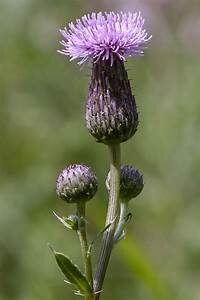Noxious Weeds
Noxious weeds are described as any plant designated by a Federal, State or county government as injurious to public health, agriculture, recreation, wildlife or property. In Nebraska, you are legally required to control noxious weeds on your property. The common noxious weeds on the Nebraska State List include: Canada thistle, plumeless thistle, musk thistle, diffuse knapweed, spotted knapweed, leafy spurge, purple loosestrife and saltcedar. To help battle these invasive species the ULNRD provides cost share funds for treatment to landowners who reside within the District. Funds are available to cover 50% of the cost of approved chemicals up to $500 per landowner.
Canada Thistle
Canada thistle is one of the most widespread of all thistle species and is estimated to infest over 375,000 acres and causes over 3 million dollars in lost production each year. Canada thistle differs from musk thistle and other thistle species due to its aggressive nature in tilled cropland, range, pasture, and non-cropland areas. The other thistle species are not considered problem species in tilled cropland. In addition to its aggressive growing nature, Canada thistle also harbors insects, potentially hosts diseases, and can release toxic substances into the soil which can inhibit plant growth. Within a single growing season, Canada thistles may grow 9 to 18 feet tall with a root system reaching 6 to 9 feet deep. Although tillage may cut through root patches, root segments as small as 1 inch can reproduce new plants.
Musk Thistle
Musk thistles are very prominent across Nebraska roadsides, pastures and rangeland. Typical cropland weed control methods are effective management tools. However, land with permanent cover that is not managed is likely to develop serious infestation and lose significant grazing area. Although musk thistle is not poisonous, cattle will avoid grazing in these infected areas.
Leafy Spurge
In Nebraska, this invasive, herbaceous, plant has caused a direct loss in forage value estimated around more than 2 million dollars. It has caused significant problems such as reducing rangeland productivity, reduced cattle carrying capacity by 50-75%, decreasing plant diversity, degrading wildlife habitat, and drastically reducing land value. Leafy spurge contains a white milky latex that is poisonous to some animals and can cause irritation to the skin. The digestive tract can also become affected if leafy spurge has been ingested. The plant can cause scours, weakness, and in larger quantities it can be fatal.



